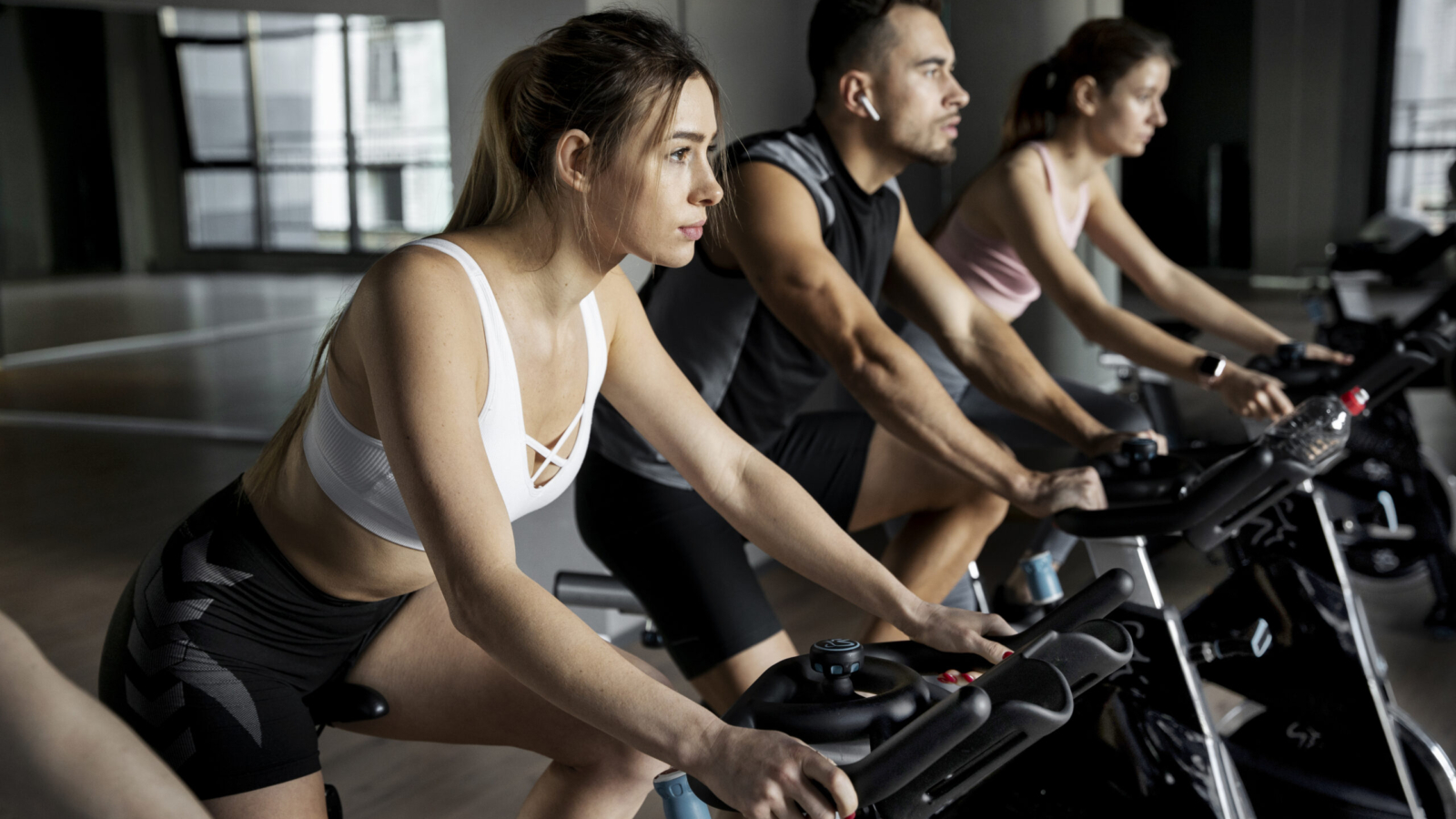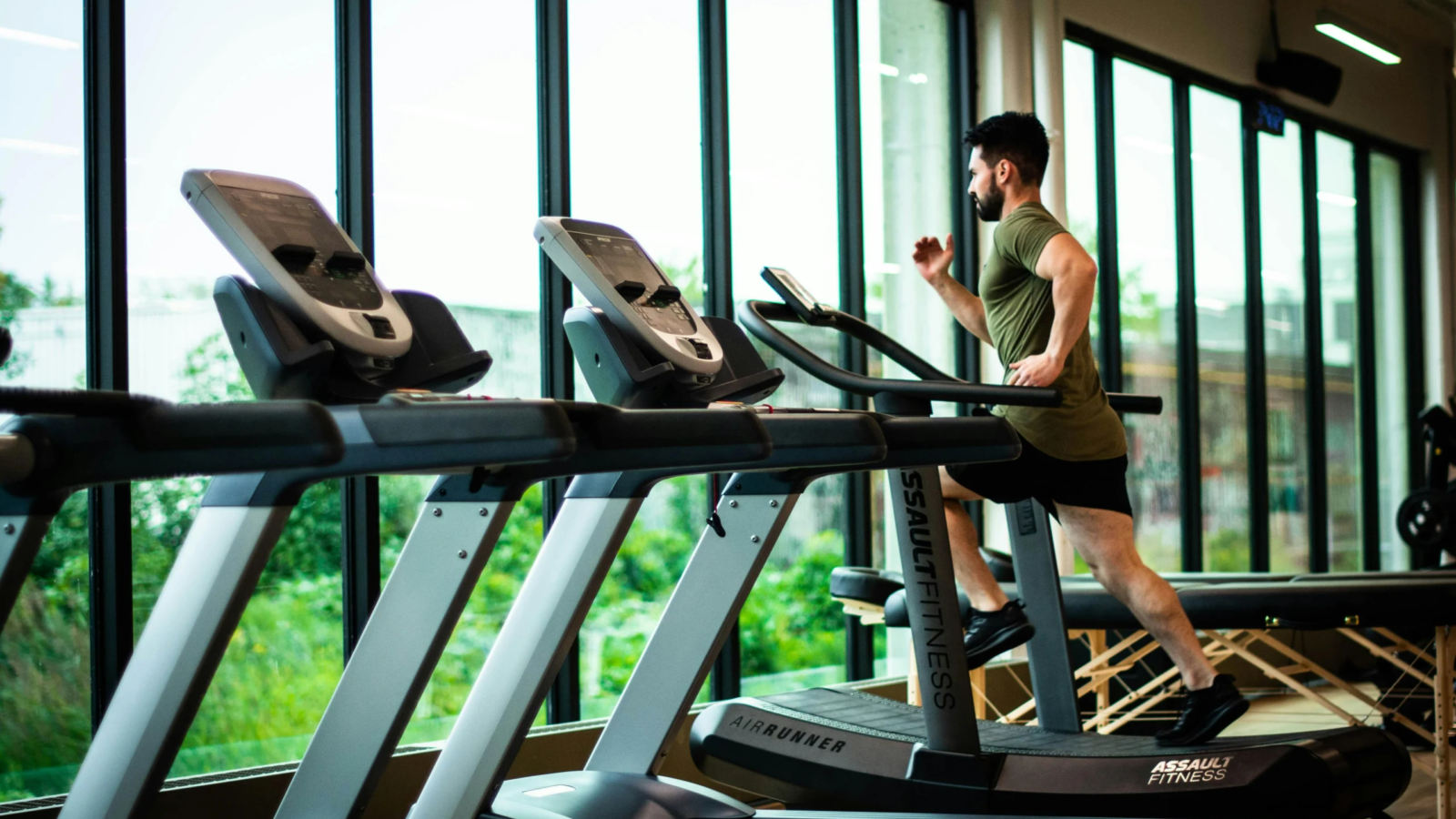High-Intensity Interval Training (HIIT) has exploded in popularity over the past decade—and for good reason. This training method burns fat, builds endurance, and boosts metabolism in a fraction of the time compared to traditional cardio. But with so many options—running workouts, the stair ramp, rowing machine vs elliptical, or even treadmill vs outdoor running—how do you choose the most effective tool for your goals?
This in-depth guide compares popular cardio machines and styles through the lens of HIIT, helping you decide what works best for your body, schedule, and preferences. Whether you’re new to fitness or an experienced athlete, optimizing your HIIT workout with the right equipment can elevate your results faster than you think.
Why HIIT Works So Well
Unlike steady-state cardio, HIIT alternates between bursts of intense effort and short periods of recovery. This style challenges both your aerobic and anaerobic systems, triggering an “afterburn” effect known as EPOC (excess post-exercise oxygen consumption). Translation? You keep burning calories long after your workout ends.
Key benefits include:
- Increased fat burning
- Improved VO2 max and cardiovascular health
- Time efficiency (20–30 minutes is often enough)
- Better insulin sensitivity and metabolic rate
However, not all HIIT methods are created equal. Choosing the right equipment or terrain can impact your performance, injury risk, and motivation.
Running Workouts: Sprint Your Way to Results
Running remains one of the most accessible and effective ways to implement HIIT. All you need is a pair of shoes and some open space—or a treadmill.
HIIT running workouts can be structured like:
- 30 seconds sprint, 90 seconds walk (repeat 6–10 rounds)
- Hill sprints (short incline runs with full rest)
- Ladder intervals: 30-60-90-60-30 seconds of running with rest in between
Pros:
- High calorie burn
- Strengthens lower body and core
- Improves cardiovascular endurance quickly
Cons:
- High impact on joints
- Requires proper form to avoid injury
- Outdoor running depends on weather and terrain
Running on Treadmill vs Outside: Which is Better for HIIT?
When it comes to running on treadmill vs outside, both have distinct advantages—and the choice largely depends on your goals and environment.
Treadmill Running:
- Controlled speed and incline
- Cushioned surface reduces joint impact
- Easy to track progress and intervals
Outdoor Running:
- Engages more stabilizer muscles
- Natural variation in terrain builds agility
- Psychological boost from fresh air and changing scenery
For HIIT, treadmill running allows precision (perfect for timed sprints), while outdoor running offers more challenge through unpredictability. If you have knee or joint concerns, treadmills might be more forgiving for high-intensity sprints.
Stair Ramp: The Underrated HIIT Power Tool
The stair ramp or stair climber is often overlooked—but it’s a brutal and effective HIIT tool. Whether you’re using a stair machine or running stadium steps, this workout targets glutes, hamstrings, and calves while skyrocketing your heart rate.
Sample stair HIIT workout:
- Sprint up a flight of stairs
- Walk down for recovery
- Repeat for 15–20 minutes
Why the stair ramp works for HIIT:
- Builds lower-body strength and endurance
- High-intensity without needing high speed
- Adds a resistance component to cardio
Compared to traditional running workouts, stair sprints offer more muscle engagement with less pounding impact. This makes them ideal for those who want intensity without high mileage.
Elliptical vs Bike: Which Should You Choose for HIIT?
If you prefer low-impact cardio, two of the most common machines are the elliptical and the stationary bike. Both are popular for HIIT because they’re joint-friendly, safe for beginners, and easy to modify.
Elliptical Machine:
- Engages upper and lower body
- Natural, fluid motion reduces injury risk
- Often includes preset HIIT programs
Stationary Bike:
- Allows very high-intensity sprints
- Excellent for quad and glute activation
- Easier to maintain high power output
Elliptical vs Bike: The HIIT Verdict
- Choose the elliptical if you want full-body movement and lower perceived exertion
- Choose the bike for explosive leg-driven intervals and maximum calorie burn
A sample HIIT protocol for both:
- 20 seconds all-out effort, 40 seconds recovery
- Repeat for 8–12 rounds
- Cool down for 5 minutes
Both machines are efficient fat burners—but the bike typically allows for greater intensity bursts, especially in a seated sprint position.
Rowing Machine vs Elliptical: A Total-Body Showdown
Looking to involve your upper body more? Let’s compare rowing machine vs elliptical for HIIT.
Rowing Machine Benefits:
- Full-body workout: legs, back, arms, and core
- High cardiovascular demand
- Great for posture and pulling strength
Elliptical Machine Benefits:
- Less technical skill required
- Focuses more on endurance
- Safer for people with lower back issues
HIIT on the Rower:
- 250m sprint, 1-minute rest (5–8 rounds)
- 30 seconds hard, 90 seconds easy (alternate for 20 minutes)
Rowing activates 85% of your body’s muscles in one smooth motion, making it one of the most efficient machines for HIIT. However, form is crucial—poor technique can lead to back or shoulder strain.
What’s Best for You?
Choosing the best machine or method for HIIT depends on three key factors:
- Injury history & joint health – Avoid high-impact running if you have joint issues; opt for elliptical or bike.
- Time availability – For quick, intense sessions, cycling or rowing can provide the most bang for your buck.
- Muscle group focus – Want to torch legs? Use stairs. Want full-body engagement? Row or use the elliptical.
In the next half of this article, we’ll break down sample HIIT workouts for each machine, tips to avoid burnout, and how to cycle different modalities for maximum fat loss and endurance gains.
Sample HIIT Workouts for Every Machine
HIIT workouts can be adapted to nearly any cardio equipment or terrain, which makes them incredibly versatile. Below are sample routines for each modality discussed, tailored to different fitness levels.
Running Workouts (Treadmill or Outdoor)
Beginner:
- Warm-up: 5 min walk or light jog
- 30 seconds fast run / 90 seconds walk
- Repeat for 6 rounds
- Cool down: 5 minutes walking
Advanced:
- Warm-up: 5 minutes jog
- 1 minute sprint / 30 seconds rest
- Repeat for 10 rounds
- Add incline for extra challenge
Whether you’re running on treadmill vs outside, the most important thing is intensity. Push yourself during sprint intervals and recover fully before the next burst.
Stair Ramp HIIT
Bodyweight Only:
- Sprint up a flight of stairs
- Walk down for recovery
- Repeat for 15–20 minutes
- Optional: Add a weighted vest for resistance
Stair Machine (Gym):
- 45 seconds fast pace
- 15 seconds slow pace
- Repeat for 8–10 rounds
Stair ramps are excellent for leg strength and cardio conditioning. Their intensity makes them perfect for shorter HIIT sessions that burn fat efficiently.
Elliptical vs Bike: Two Low-Impact HIIT Routines
Elliptical Machine:
- Warm-up: 5 minutes easy pace
- 20 seconds max effort, 40 seconds slow pace
- Repeat for 12 rounds
- Cool down: 5 minutes easy pace
Stationary Bike:
- Warm-up: 5 minutes slow pedaling
- 30 seconds sprint (high resistance), 90 seconds rest
- Repeat for 8–10 rounds
- Cool down: 3–5 minutes
For those comparing elliptical vs bike, remember: the elliptical spreads the load across more muscle groups, while the bike focuses intense energy into your legs—especially quads and glutes. Choose based on what muscle groups you want to emphasize and your joint tolerance.
Rowing Machine vs Elliptical: Upper vs Full Body
Rowing Machine HIIT:
- Warm-up: 5 minutes easy row
- 250 meters hard effort / 1-minute rest
- Repeat for 6–8 rounds
- Cool down: light row 5 minutes
Elliptical Machine (Full-Body Focus):
- 30 seconds fast, 60 seconds slow
- Repeat for 10–12 rounds
- Use handles to activate upper body
Rowing machine vs elliptical is more than a calorie-burn competition—it’s about how you want to challenge your system. Rowers are excellent for strength-endurance hybrids, while ellipticals keep things smooth and controlled.
Best Practices to Maximize HIIT Results
Whatever cardio equipment you use, here’s how to get the most from your HIIT workouts:
1. Prioritize Recovery
The power of HIIT lies in intensity. Overdoing it reduces returns and increases risk of burnout or injury. Limit HIIT to 2–4 times per week and allow recovery between sessions.
2. Master Your Form
This applies especially to rowing and running workouts. Poor posture or technique can quickly turn a fat-burning session into a joint-wrecking one.
3. Track Performance, Not Just Calories
Focus on improving your sprint speed, resistance level, or distance per interval. Progress metrics keep motivation high and results tangible.
4. Combine Modalities
One of the best ways to stay consistent and avoid plateaus is to rotate machines and methods. For example:
- Monday: HIIT cycling
- Wednesday: Stair ramp sprints
- Friday: Rowing machine intervals
- Sunday: Outdoor running workout
This keeps workouts fresh, avoids overuse injuries, and trains the body in multiple movement patterns.
Treadmill vs Outside Running for Long-Term Gains
Still unsure about running on treadmill vs outside for HIIT? Here’s a quick breakdown of who each works best for:
| Goal | Choose Treadmill | Choose Outdoor |
|---|---|---|
| Controlled pacing | ✅ Yes | ❌ No |
| Mental stimulation | ❌ Repetitive | ✅ Varied scenery |
| Knee or joint concerns | ✅ Softer surface | ❌ Hard pavement |
| Real-world race prep | ❌ Limited terrain | ✅ Real-world conditions |
Treadmills are great for beginners or city dwellers with safety concerns, while outdoor runners benefit from terrain variability, better proprioception, and often more calorie burn due to wind resistance and inclines.
Elliptical vs Bike vs Rower: The Calorie Burn Face-Off
If your primary goal is fat loss through HIIT, you’ll want to know how these machines stack up:
- Elliptical: 600–800 calories/hour (full-body, steady burn)
- Stationary Bike: 500–1000+ calories/hour (intensity dependent)
- Rowing Machine: 700–900 calories/hour (full-body, strength/cardio hybrid)
Note: HIIT burns more per minute than steady-state, and afterburn (EPOC) enhances this over 24 hours.
So which is best? The answer is personal. The bike offers unmatched sprint potential. The rower delivers strength and cardio in one. The elliptical is your friend for longer, lower-impact sessions that still pack a punch.
Conclusion: Build Your HIIT Routine for You
With so many cardio options available—running workouts, stair ramp intervals, elliptical vs bike, or rowing machine vs elliptical—there’s no one-size-fits-all answer. The best HIIT workout isn’t necessarily the one that burns the most calories or feels the hardest in the moment. It’s the one that aligns with your body, your goals, and your lifestyle, and—most importantly—the one you’ll stay consistent with.
Whether you’re chasing fat loss, improving endurance, or just trying to stay mentally sharp and physically active, HIIT gives you unmatched flexibility to adapt workouts around your needs. You can mix and match machines, alternate indoor and outdoor sessions, or switch up intensity based on how your body feels. That’s the beauty of it: HIIT works with you, not against you.
Key Takeaways for Long-Term Success
✅ Running workouts deliver a high-impact cardio punch and exceptional calorie burn—but come with a higher risk of joint strain if overdone. Use them for maximum intensity, or mix in other low-impact options to give your body a break.
✅ Stair ramp sprints torch the lower body and provide built-in resistance with every step. Perfect for developing power, leg tone, and cardiovascular resilience in short, time-efficient bursts.
✅ Rowing machine vs elliptical? If you want total-body strength and cardio in one package, rowing is your go-to. If you need low-impact, full-body fluidity and endurance work, the elliptical is a reliable choice.
✅ Elliptical vs bike comes down to movement style. The elliptical spreads the load, while the stationary bike lets you push your lower body to its explosive max. Both are excellent for low-impact, high-intensity intervals.
✅ Running on treadmill vs outside isn’t about right or wrong—it’s about purpose. Use the treadmill for precise pacing and incline control; go outside for variety, terrain challenge, and mental refreshment.
Make HIIT a Lifestyle, Not a Phase
Consistency beats intensity when it comes to lasting results. HIIT allows for shorter sessions, which is ideal for busy professionals, parents, or anyone managing a tight schedule. You don’t need hours in the gym—just 20 to 30 minutes of smart intervals, three to four times a week, can transform your fitness.
But don’t overlook the importance of recovery, sleep, and mobility work. These are what allow you to go hard without burning out. Stretch after sessions. Foam roll. Prioritize hydration and nutrition. And most importantly, listen to your body—rest is not weakness; it’s strategy.
Experiment, Track, Improve
Try creating your own HIIT rotation schedule. For example:
- Monday – HIIT cycling (bike)
- Wednesday – Rowing sprints
- Friday – Stair ramp intervals
- Saturday or Sunday – Outdoor run + recovery yoga
Use a fitness tracker or journal to measure progress. Are you going further in less time? Is your heart rate recovering faster between sets? Are your clothes fitting better, or is your mood improving? These are the real indicators of success.
Final Word: Move with Intention, Train with Purpose
Whatever machine or method you choose, remember: HIIT is just a tool—you are the engine. The most effective routine is the one that excites you, challenges you, and supports your long-term health.
So whether you’re sprinting on a treadmill, climbing stairs, gliding on an elliptical, or powering through a rowing session, keep showing up. Lace up, strap in, or climb aboard—your best HIIT workout isn’t out there somewhere; it’s the one you commit to today.
Fitness isn’t about punishment. It’s about power, presence, and progress.
Start where you are. Use what you have. Do what you can. Repeat.



